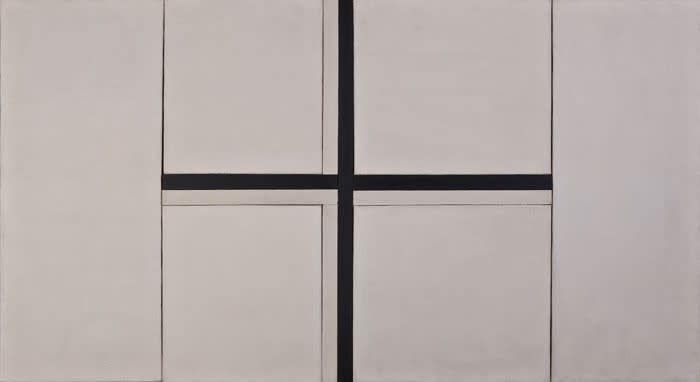Born in Minnesota in 1923, Ralph Coburn spent most of his childhood and young adult years in Miami, Florida. In 1941, Coburn enrolled in MIT’s School of Architecture and Planning where he was taught to create works of an original concept. Coburn also engaged in collaborations with students from the School of the Museum of Fine Arts, Boston and found himself drawn to the world of art. After two years at MIT, Coburn, though exempt from military service due to eye issues, worked as a draftsman for the Miami Air Depot, absorbing the abstraction of technical drawings. When this position ended, he left MIT to pursue painting.
In May of 1949, with an invitation to join his friend, Ellsworth Kelly, Coburn boarded a ship for France. Coburn would spend the next seven years living between Boston and France. This period allowed Coburn to create radical and groundbreaking works of art. Here, Coburn met other artists whose ideas he responded to including Hans Arp and John Cage. Coburn’s work began as an exploration of color and picture-building. He distilled the world around him, pulling just a few lines from a scene in order to capture the critical forms.
Introduced by Hans Arp to the idea of chance in art, Coburn decided to take this concept one step further and explore the question of choice, an endeavor he began in 1949/50. For Coburn, “choice” meant focusing on free will and the contributions of both the artist and the viewer/owner to the work of art. Coburn called his work “participatory,” adding elements of external involvement through interactive canvases with cut voids. The visuals of these pieces shifted depending on the color or material of the wall behind them. He then began to create groupings of grid based paperboard collages, allowing for their reordering by whoever engaged them. In this way, Coburn’s work became infinitely variable, taking on new identities with the input and ideas of the people who came into contact with them.
While deeply serious about the originality and importance of his work, Coburn shunned attention and his work was kept from view for nearly sixty years. A few examples surfaced in the survey exhibition of Boston artists of the 1940's The Visionary Decade, Boston University, 2002. More recently, Coburn has been part of several group and solo exhibitions including The Shape of Abstraction, Boston University Art Gallery, Boston, MA (2010). Arranged by Choice: The Art of Ralph Coburn, Cape Ann Historical Museum, Gloucester, MA (2012); and Ralph Coburn: Random Sequence, The Arts Club of Chicago, Illinois (2017). Lost, Loose and Loved: Foreign Artists in Paris, 1944 - 1968, Reina Sofia Museum, Madrid (2018) and future museum shows in France and New York in 2021 and 2022.
